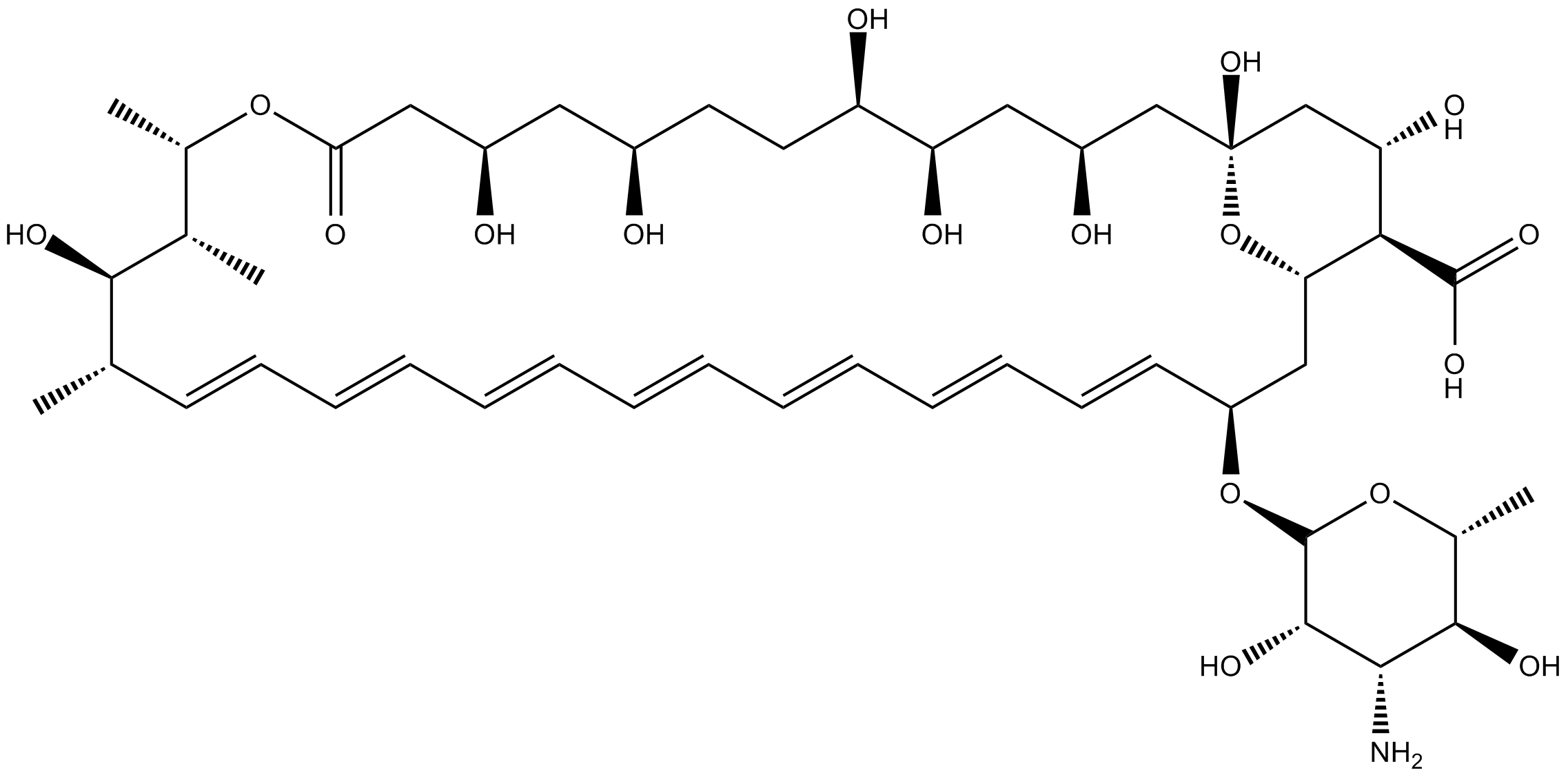Amphotericin B (Synonyms: LNSAmB, NSC 527017) |
| Catalog No.GC14092 |
Amphipathic polyene antibiotic
Products are for research use only. Not for human use. We do not sell to patients.

Cas No.: 1397-89-3
Sample solution is provided at 25 µL, 10mM.
Amphotericin B, a polyene antifungal antibiotic, has been produced from a strain of Streptomyces nodosus with an IC50 of 0.028–0.290 μg/ml.
In vitro: Amphotericin B was the most effective drug for treating many life-threatening fungal infections. In cells expressing TLR2 and CD14, amphotericin B induced signal transduction and inflammatory cytokine release. In primary murine macrophages and human cell lines expressing TLR2, CD14, and the adapter protein MyD88, amphotericin induced NF-κB-dependent reporter activity and cytokine release, whereas cells deficient in any of these failed to respond. Cells with TLR4 mutation were less responsive to amphotericin B stimulation than cells expressing normal TLR4 [1]. Amphotericin B could interact with cholesterol, the major sterol of mammal membranes, thus limiting the usefulness of Amphotericin B due to its relatively high toxicity [2]. Low AmB concentrations (≤ 0.1 μM) induced a polarization potential in KCl-loaded liposomes suspended in an iso-osmotic sucrose solution, indicating K+ leakage. AmB (> 0.1 μM) allowed cations and anions movements. LPs suspended in an iso-osmotic NaCl solution and exposed to AmB (0.05 μM) exhibited a nearly total collapse of the negative membrane potential, indicated that Na+ entered into the cells [3].
In vivo: Amphotericin B prolonged the incubation time and decreased PrPSc accumulation in the hamster scrapie model. Amphotericin B markedly resulted in reduction of PrPSc levels in mice with transmissible subacute spongiform encephalopathies (TSSE) [4].
References:
[1]. Sau K1,Mambula SS,Latz E,Henneke P,Golenbock DT,Levitz SM.The antifungal drug amphotericin B promotes inflammatory cytokine release by a Toll-like receptor- and CD14-dependent mechanism.J Biol Chem.2003 Sep 26;278(39):37561-8. Epub 2003 Jul 14.
[2]. Barwicz J1,Tancrède P.The effect of aggregation state of amphotericin-B on its interactions with cholesterol- or ergosterol-containing phosphatidylcholine monolayers.Chem Phys Lipids.1997 Feb 28;85(2):145-55.
[3]. Ramos H1,Valdivieso E,Gamargo M,Dagger F,Cohen BE.Amphotericin B kills unicellular leishmanias by forming aqueous pores permeable to small cations and anions.J Membr Biol.1996 Jul;152(1):65-75.
[4]. Demaimay R1,Adjou K,Lasmézas C,Lazarini F,Cherifi K,Seman M,Deslys JP,Dormont D.Pharmacological studies of a new derivative of amphotericin B, MS-8209, in mouse and hamster scrapie.J Gen Virol.1994 Sep;75 ( Pt 9):2499-503.
Average Rating: 5 (Based on Reviews and 36 reference(s) in Google Scholar.)
GLPBIO products are for RESEARCH USE ONLY. Please make sure your review or question is research based.
Required fields are marked with *




















